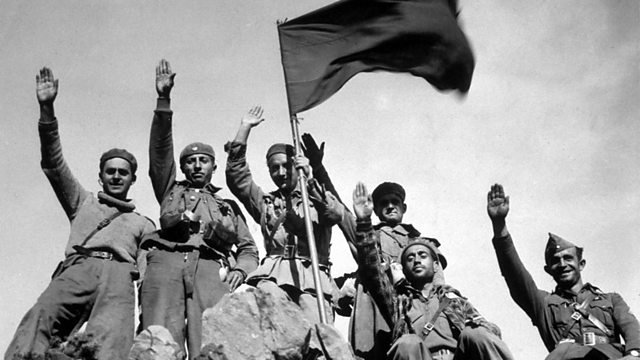Spanish Civil War - a Chessboard for Europe
A proxy war is an armed conflict between two states or non-state actors which act on the instigation or on behalf of other parties that are not directly involved in the hostilities.(Wikipedia,2019)
The Spanish Civil War took place from 1936 to 1939. In 1936, Manuel Azaña, a democratically elected Republican, was serving as the president of Spain when a group of the most influential generals from the part of the Spanish army based in Morocco carried out a coup d'etat led by General Francisco Franco. Spain quickly erupted into civil war.
The war was known as a struggle between democracy and fascism, due to the state of world politics.
The left side, known as the Republicans, was formed by the Spanish government together with unions, communists, anarchists, workers, and peasants. On the other side were the Nationalists, the rebel part of the army, the bourgeoisie, the landlords, and, generally, the upper classes.

Comparison today
We are accustomed today to slaughter inflicted in the name of Religion. Back in the early to the mid 20th century, the cause was ideology. The disputes over whether the world should be democratic or fascist or communist. Yet in other ways, the conflict seems all too familiar. Like today’s Iraq and Syria, the combatants fought amongst themselves as well as the enemy.
Those using the Republicans as for their proxy include The Soviet Union, Mexico and France.
After the Nationalist victory, a dictatorship ruled the country for almost 40 years, from 1939 to 1975, when the Spanish dictator Francisco Franco died. Although Franco's side had received German aid during the Spanish Civil War, he decided not to get directly involved in World War II because Spain was in terrible conditions after suffering the civil war. The only support Spain sent to Germany was a small group of volunteers.
Proxy war waged by outside nations pumping in men, weapons and money. Similar to the state of Syria or Turkey? It’s hard to compare to sunny Spain, now a peaceful member of the European Union, but eighty years ago the arena for one of the most vicious conflicts in history. The Spanish Civil War of 1936–39 is remembered today as a sort of Second World War-in-training, a proxy warm-up between Team Axis and Team Allies a few years later.
The Spanish Civil War still leaves us with a question: What is the cost for stability? Some believe that we need strongmen like Saddam Hussein and Bashar al-Assad to bring order to the Middle East. There was indeed order in Spain after the civil war. Under Franco’s rule, Spain was mostly peaceful (except for the Basques), and a U.S. ally that hosted American nuclear missile submarines. However, It was also an authoritarian regime with political prisoners, censorship and brutality.